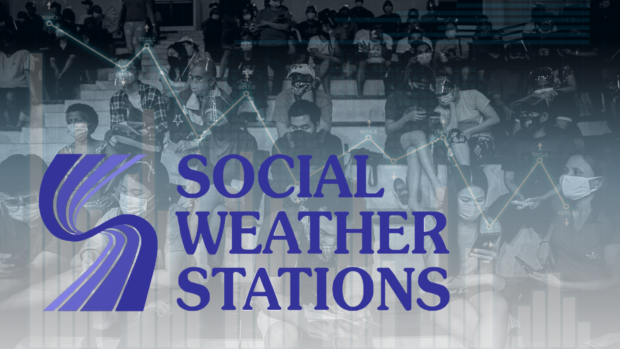
SWS logo / Reuters photo
MANILA, Philippines — While the number of Filipino families who experienced hunger declined from 3 million in December 2022 to 2.7 million in March 2023, hunger in the country has not yet returned to its pre-pandemic level.
This was according to a Social Weather Stations (SWS) survey.
The SWS survey from March 26 to 29, with results released only on Thursday, May 11, showed that the number of families who were hungry and had nothing to eat dipped from 11.8 percent in December 2022 to 9.8 percent in the first quarter of the year.
This is also below the 11.3 percent, or 2.9 million families, who experienced involuntary hunger in October 2022.
But, SWS pointed out that the current figure is still higher than the 8.8 percent, or 2.1 million families in December 2019–before the COVID-19 pandemic struck.
According to the pollster, the number of hungry families fell across the country but was “more noticeable in Balance Luzon and the Visayas than in Metro Manila and Mindanao.”
“As of March 2023, the experience of hunger was highest in Mindanao at 11.7 percent of families, followed by Metro Manila at 10.7 percent, the Visayas at 9.7 percent, and Balance Luzon (or Luzon outside Manila) at 8.7 percent. It has been the highest in Mindanao in 39 out of 101 surveys since July 1998,” SWS said.
From December 2022 to March 2023, this was how the incidence of hunger went down per area:
- Balance Luzon – From 1.3 million families to 1.1 million families
- Visayas – From 576,000 to 499,000 families
- Metro Manila – From 399,000 to 397,000 families
- Mindanao – From 738,000 to 721,00 families
Among the 2.7 million hungry families, SWS said 2.3 million experienced moderate hunger, or hunger only once or a few times, while those who suffered from severe hunger or were often or always hungry accounted for 340,000.
It noted that These figures increased from 2.4 million moderately hungry families to 599,000 severely hungry families in December 2022.
SWS also noted that the overall hunger rate in the country declined among families who consider themselves non-poor, but it “hardly changed” among those who rated themselves poor, from 17.7 percent to 18.5 percent.
READ: 14 million Filipino families consider themselves poor — SWS
“Rates of hunger among the self-rated food-poor are always higher than rates of hunger among the self-rated poor at any point in time,” SWS said.
To arrive at these results, SWS conducted in-person interviews with 1,200 respondents – 300 each in Metro Manila, Balance Luzon, Visayas, and Mindanao.
The sampling error margins for the SWS survey are ±2.8 percent for national percentages and ±5.7 percent each for Metro Manila, Balance Luzon, Visayas, and Mindanao.
RELATED STORIES:
Hunger in PH: Real solutions needed (astronaut meals not included)
Charting the cycle of hunger in PH: It’s always there

